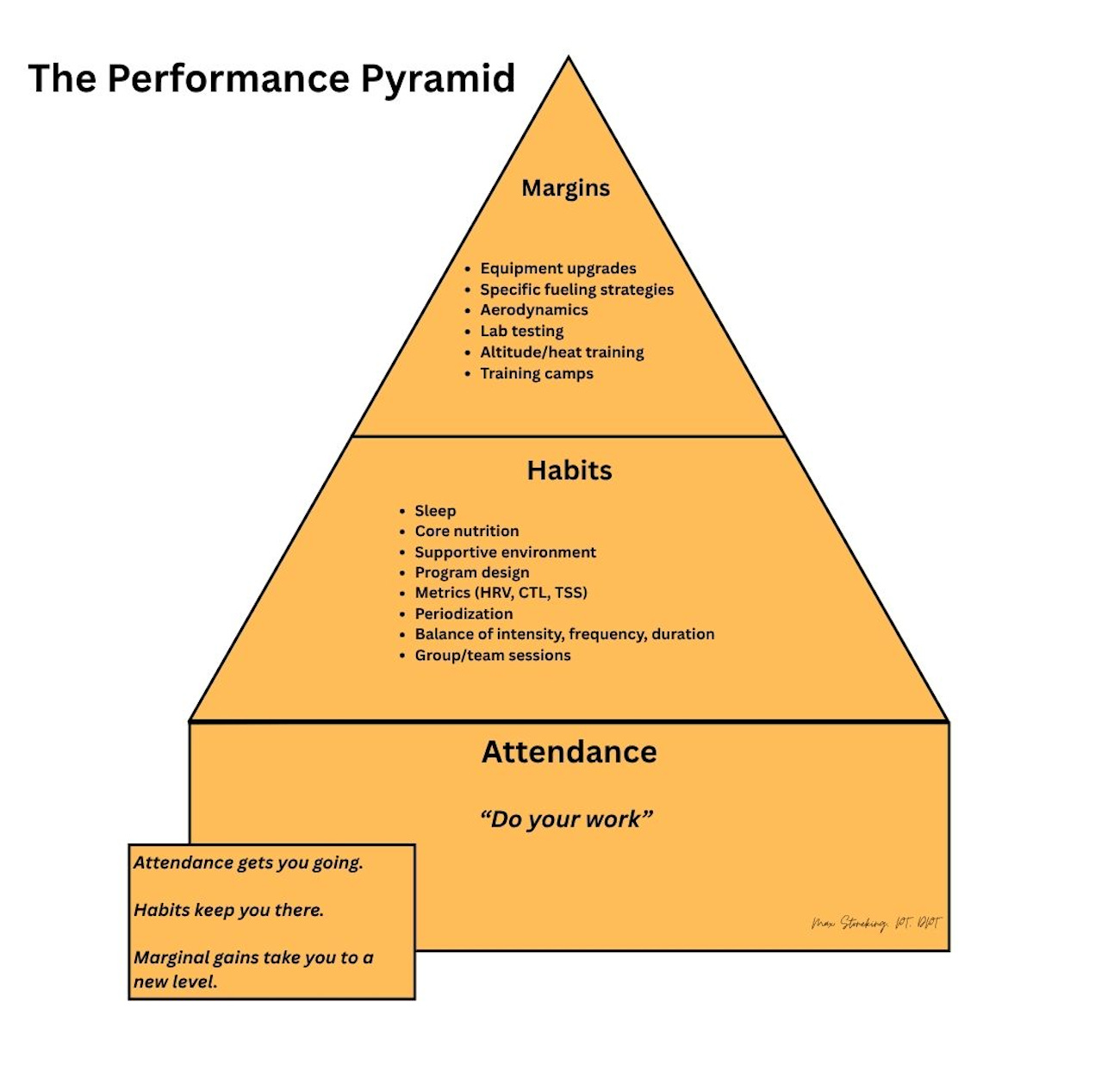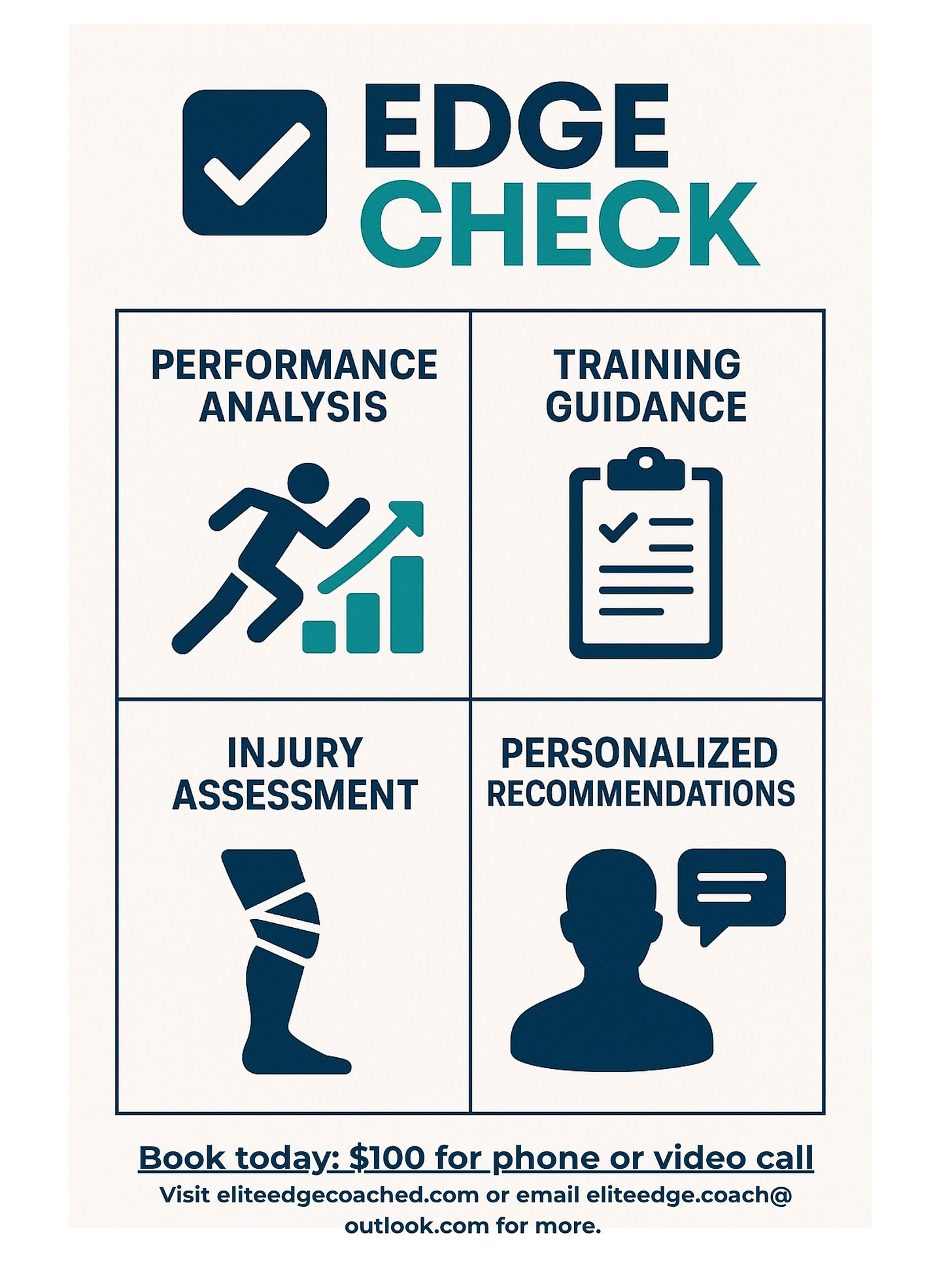Crafting a sustainable training program is not complicated. Even as an athlete matures and becomes more experienced, the design of a program does not become more complicated. Complex? Maybe. More challenging? Certainly. But making the training hard to understand is rarely needed.
This is where amateurs can learn from the pros. It is not any fancy method that is worth copying, but rather the foundation from which their training rests.
This week, we explore the Performance Pyramid. A simple framework that breaks training into three levels:
Attendance – showing up, consistently
Habits – the systems and behaviors that sustain your progress
Marginal Gains – the fine-tuning that elevates your peak
Attendance
First and foremost, people who are successful are showing up to the planned training sessions. They have been for many years. They put in the hours. You are no different.
This might be the most difficult piece of the puzzle because it requires being honest with yourself and your goals. You may have to do sessions you do not like or adjust your schedule to fit in an important long run or long ride.
There will likely be days that you truly are not able to attend. This is not something to be ashamed of. Training is not about having a winning streak and 90% is still an A.
What gets folks in trouble is looking back at a program that has 60% or 70% of the sessions completed as planned…or sometimes not completed at all! If this is you, and you are questioning why you are not getting better, you need to have a call to arms. Either carve out the space to do what is required of your goal or choose a new goal. Neither one is wrong, but something will have to change.
Show up. Be intentional. Build habits.
Habits
What is a habit?
A good working definition for athletic or personal goals is that a habit is a practice which takes little to no mental energy to carry out. You have engrained it in your process well enough to have it run on autopilot. Good habits, as we will discuss, complement your ability to show up.
Given that your life is likely not dependent on your athletic performance, maintaining a semblance of health comes first.
Sleep
Core nutrition
A supportive environment
Those are pillars of health, but organizing your lifestyle to execute those habits also will help your performance. A worthy double whammy.
After you have those building blocks in place, you can get to the fun stuff.
Manipulating volume, intensity, and duration
Utilizing progressive overload (doing more work over time)
Tracking trends in metrics such as heart rate, power, pace, training load
Joining a group or a team for some sessions
A habit of being organized and structured with your program can go a long way. You cannot simply do whatever you please and hope for success.
You have already made the commitment to show up, so you might as well maximize your time there. With good habits you will be able to sustain your training from season to season. Speaking from experience, sport becomes more fun if you are able to do it for years rather than a few months.
Marginal Gains
“I’m so dialed in, bro.”
Sound familiar?
It should be noted that there is a time and place to get into the weeds of training science. Specific lab testing, nutritional approaches, and equipment upgrades can provide a helpful boost in the right context.
Truly being dialed in, however, means you have a solid foundation of Attendance and Habits. The things you choose in the marginal gains category will never work if you are sleeping poorly, stressed out, and missing training sessions.
Furthermore, if you are new to sport, you may be able to make it a few years without investigating these fringe interventions.
Prove that you want to be doing the sport you have chosen
Generate evidence that your program/lifestyle is helping you improve
Reach for the extras/add-ons if you are serious about a new level of competition
The Performance Pyramid reminds us that excellence is built on a solid base of consistent effort and smart systems, and is enhanced with careful refinement.
Training success isn't reserved for the elite. It is accessible to anyone willing to respect the process and work from the ground up.
Looking for guidance for how to make the Performance Pyramid work for you?
Consider an EdgeCheck with Elite Edge Coaching. Details below.






Spot on! 🎯